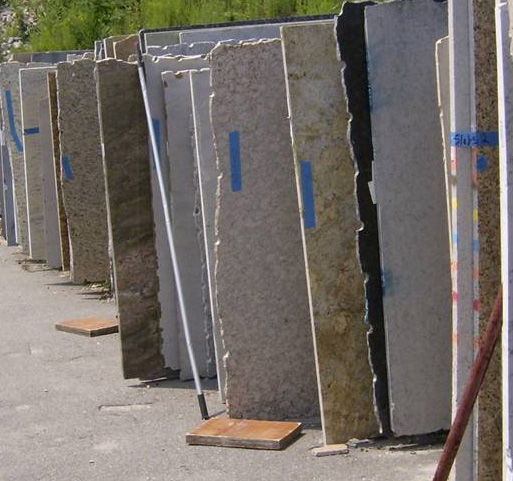Granite Countertops and Radiation
 The Connecticut Department of Energy and Environmental Protection (DEEP) and the Department of Public Health (DPH) have received a number of calls with questions regarding the safety of granite countertops. Specifically, whether they emit radiation and radon gas, and how much is safe. In response to the increased level of questions, the Connecticut DEEP has performed dose rate surveys on over 400 granite slabs, samples and demo countertops. Most have shown insignificant increases in dose rate over background.
The Connecticut Department of Energy and Environmental Protection (DEEP) and the Department of Public Health (DPH) have received a number of calls with questions regarding the safety of granite countertops. Specifically, whether they emit radiation and radon gas, and how much is safe. In response to the increased level of questions, the Connecticut DEEP has performed dose rate surveys on over 400 granite slabs, samples and demo countertops. Most have shown insignificant increases in dose rate over background.
“Background” refers to the amount of radiation that is naturally present in the environment and includes contributions from cosmic and terrestrial sources. The annual exposure for the average citizen of the USA, including background radiation, medical exposures, radon, industrial and commercial sources, is about 360 millirem. The background portion of that varies widely, depending on the type of rock or soil in the area, and the elevation above sea level. Variations of 40-50 millirem a year from area to area are common in Connecticut. The International Commission on Radiation Protection (ICRP)recommends a limit of 100 millirem a year for members of the public from industrial sources (Source: Volume 21, No. 1-3 of the Annals of the ICRP, as Publication 60).
We found a few types of granite with slightly elevated dose rates above background. If a person leaned against the highest of these for two hours a day for a year, they would have an increase of about one quarter of the variation found above or about 10 to 13 millirem a year.
We have not surveyed for radon levels in homes with granite countertops. Studies by the Health Physics Society and Dr. Chyi at the University of Akron, indicate that a tightly sealed house with a granite countertop with a dose rate twice background would still be less than 1 tenth of the EPA guideline. However, there may be exceptions, which could push radon levels well over the 4 pCi/L guideline from the EPA. (Note: The calculations in this document make some assumptions about the meter being used, room size and countertop area that may not be the same in your case. For example, their meter, a non-energy compensated GM tube, over- responds by a factor of two. If you use an energy compensated GM tube or an Ion Chamber instrument, you would not start out by dividing your countertops net dose-rate by 2.)
Testing Your Home For Radon
The EPA recommends, and we concur, all homes should be tested for radon. Homes that test high should be surveyed to determine the source of radon, and then make decisions as appropriate.
Consider using several radon test cartridges. Do not place one in the kitchen near a sink or stove where humidity could reduce its effectiveness. Try a room right next to the kitchen, the basement and a bedroom. Do them all at the same time. Choose a time of year when you can keep all the windows closed.
For additional information:
-
EPA information on Radon - General information about radon
-
EPA information on frequently asked question on granite countertops and radon
-
EPA "RadTown, USA" site offers lots of easy to understand information on radiation and background radiation.
-
Health Physics Society information on background radiation
-
"Are granite countertops bad for your health?", May 9, 2008 (TV broadcast). Notice the method of measuring radon in this broadcast. Putting a granite sample and a radon meter in a plastic box will give an artificially high reading. The dilution that takes place with a normal size kitchen and air exchange with outside air would reduce that reading by a factor of a 1000 or more.
Content Last Updated on December 30, 2008

